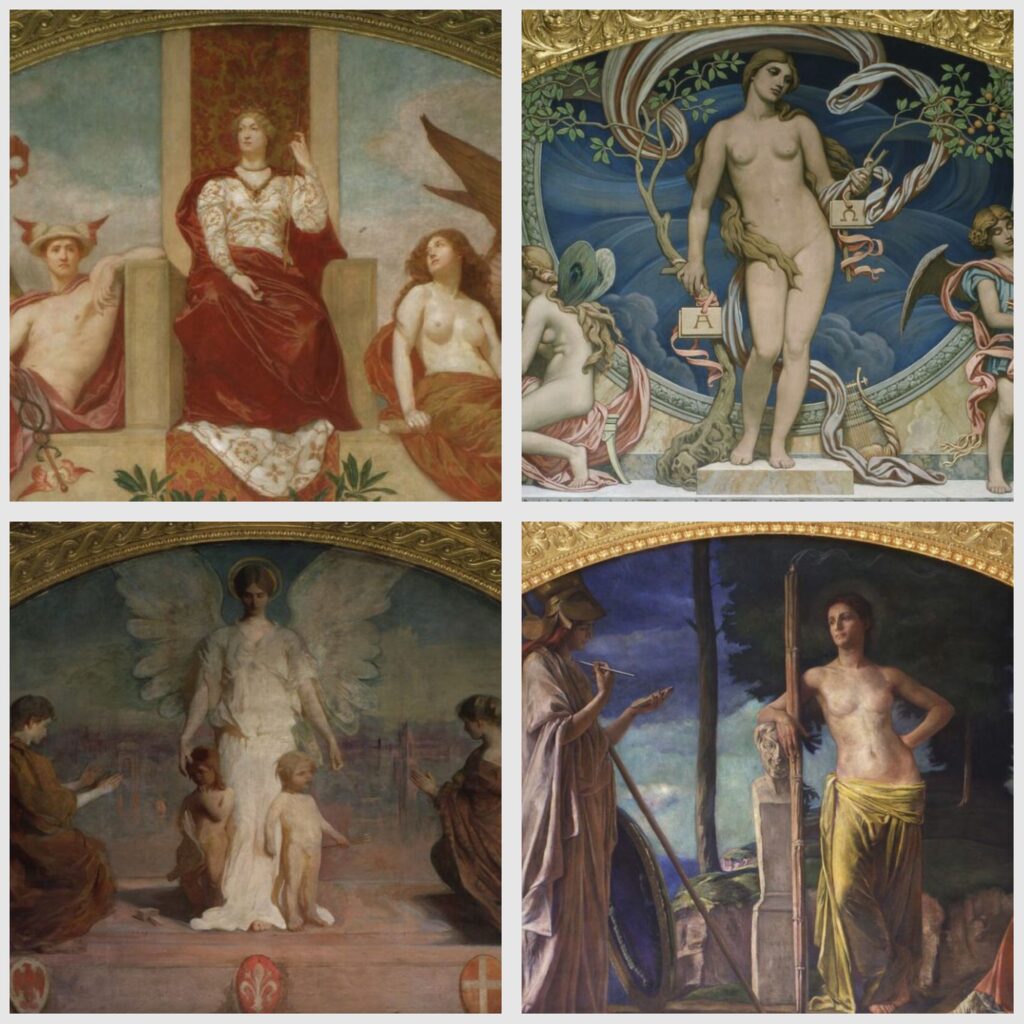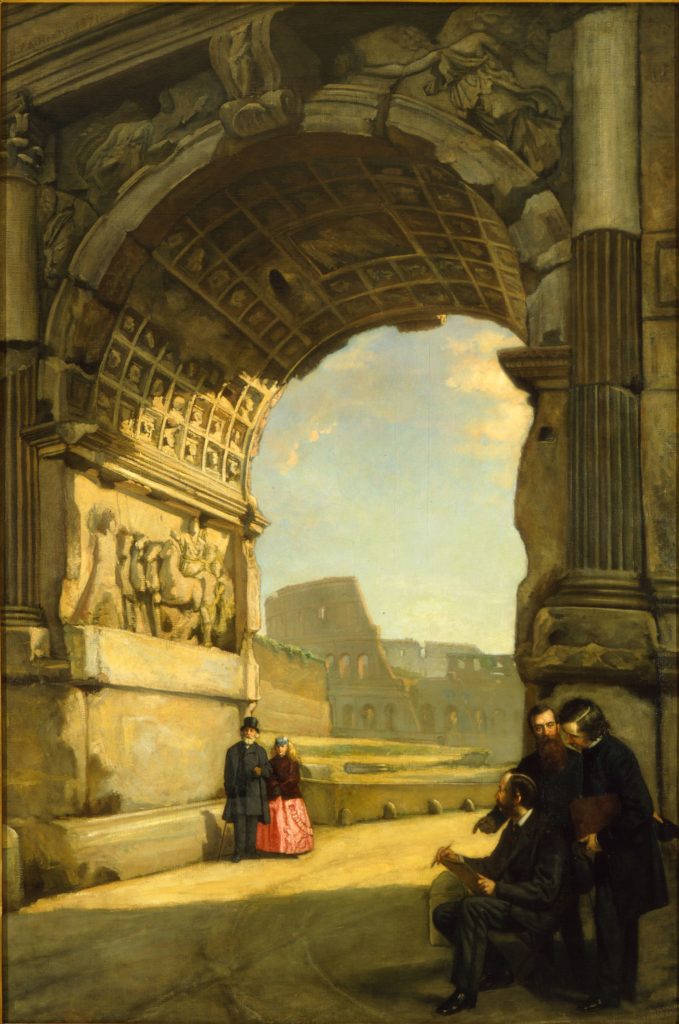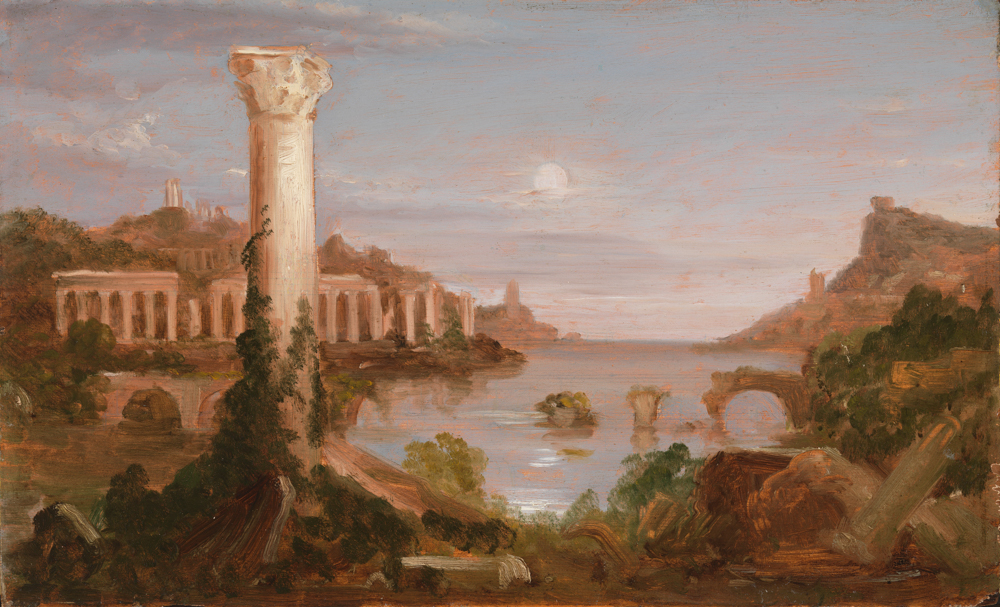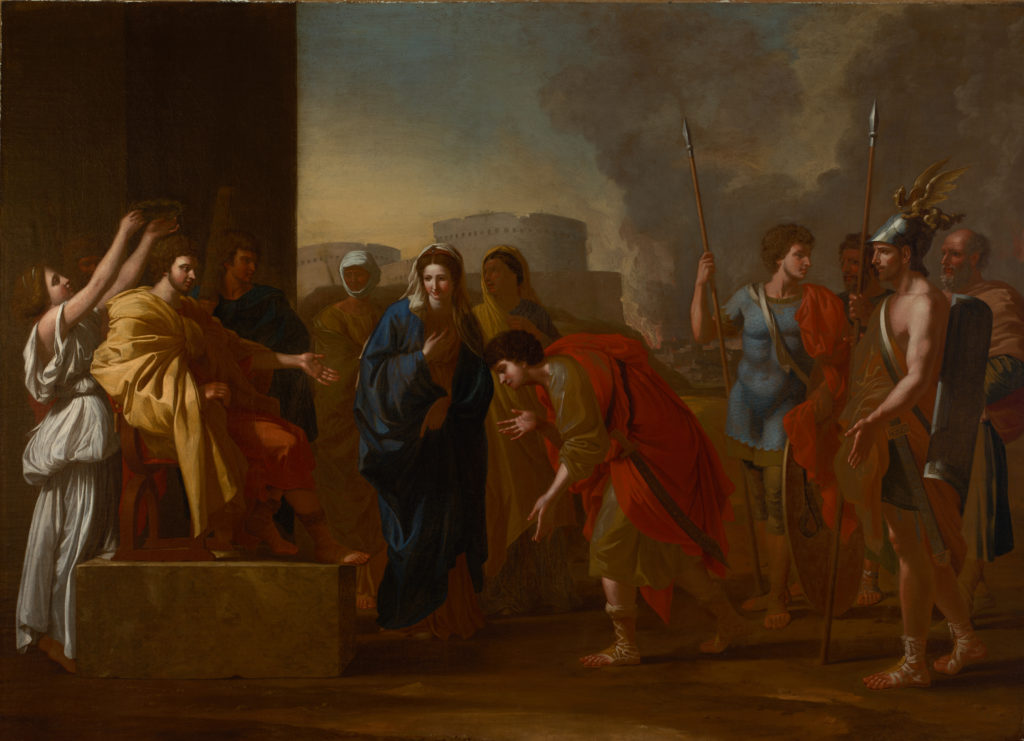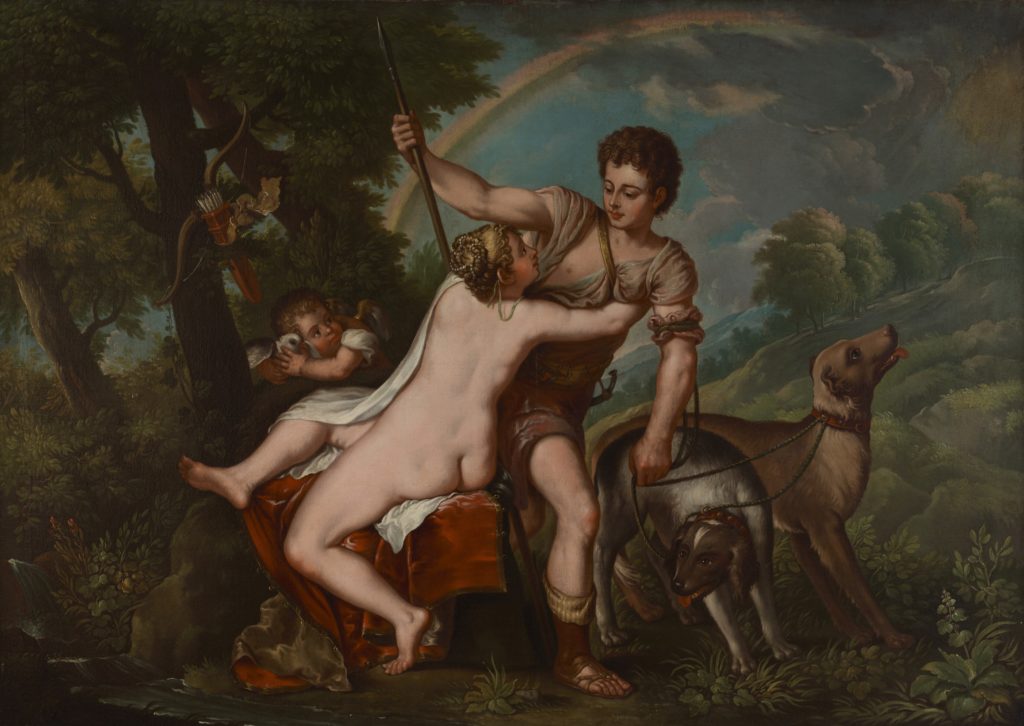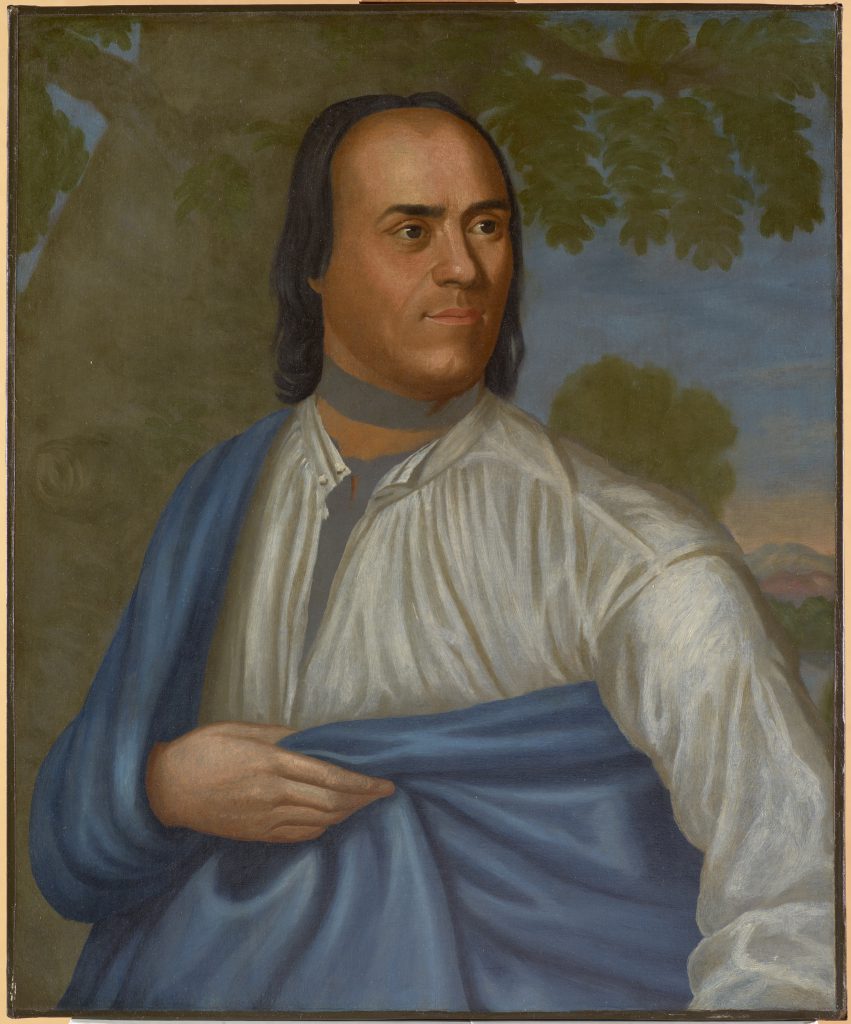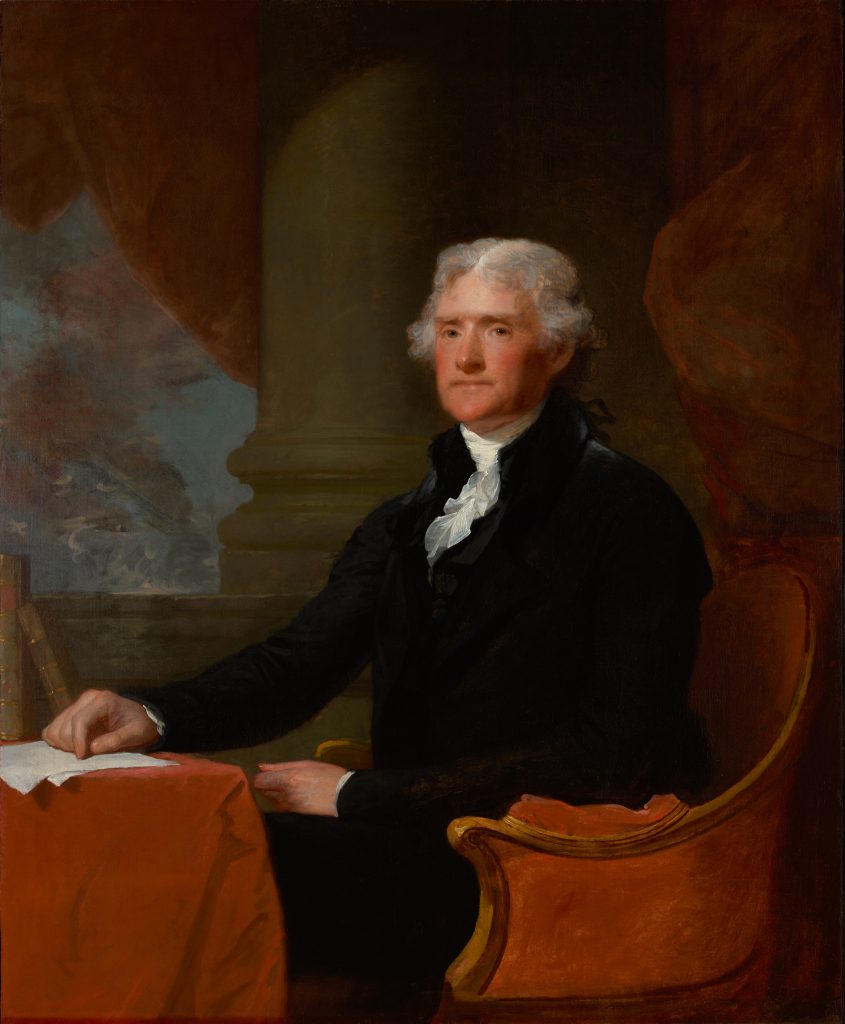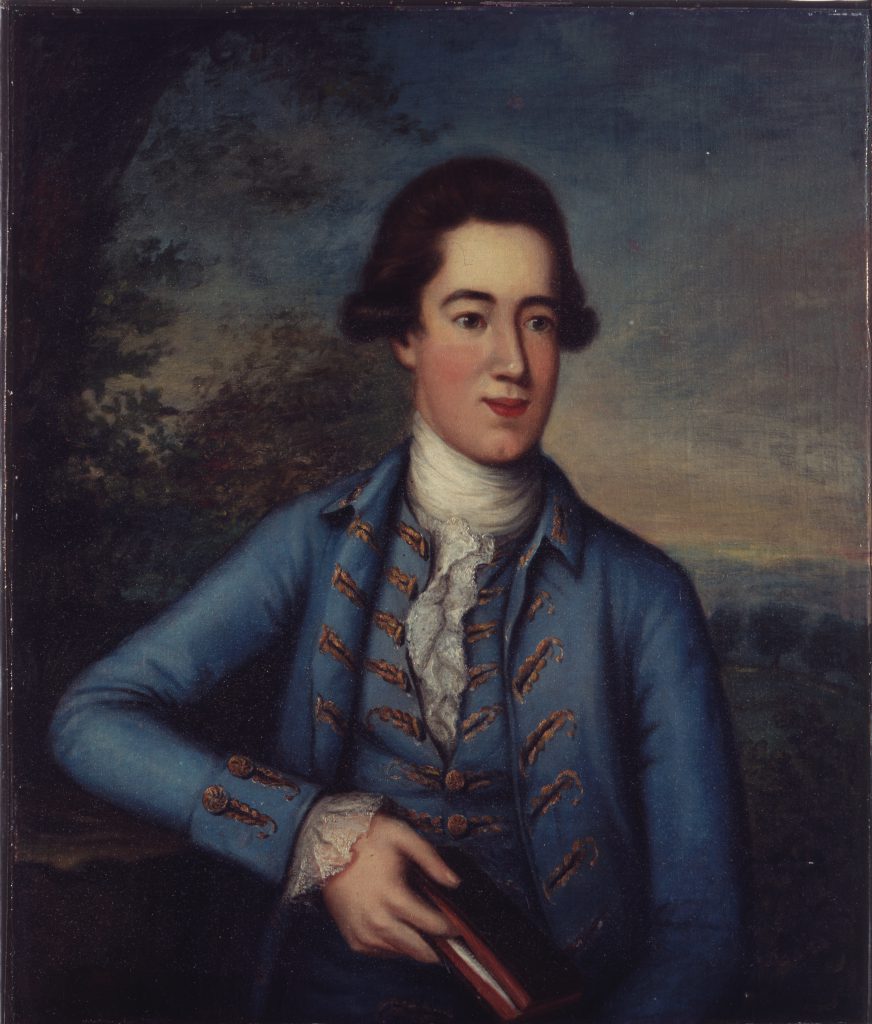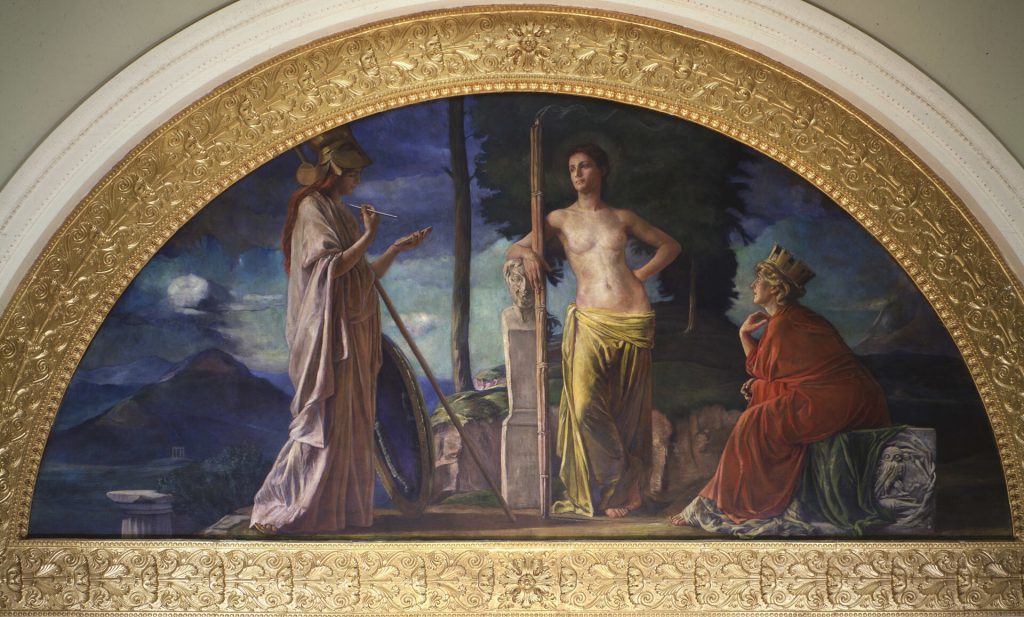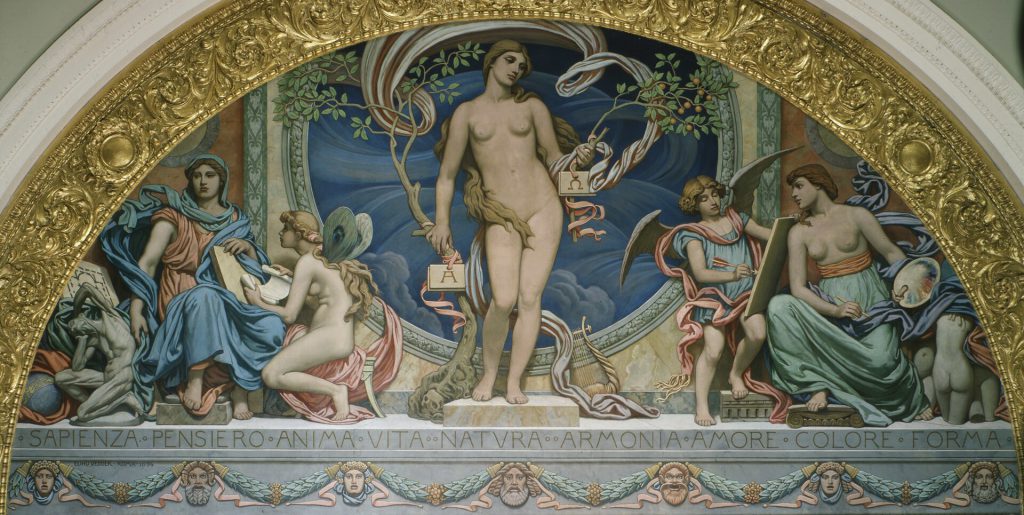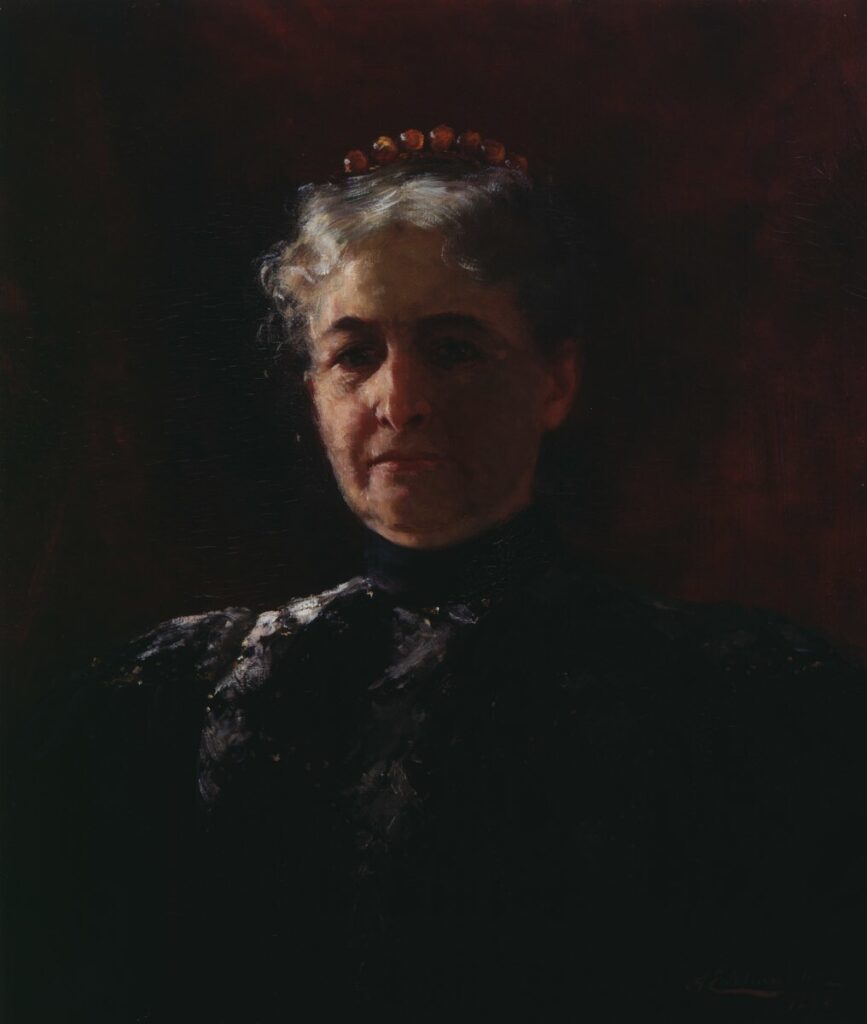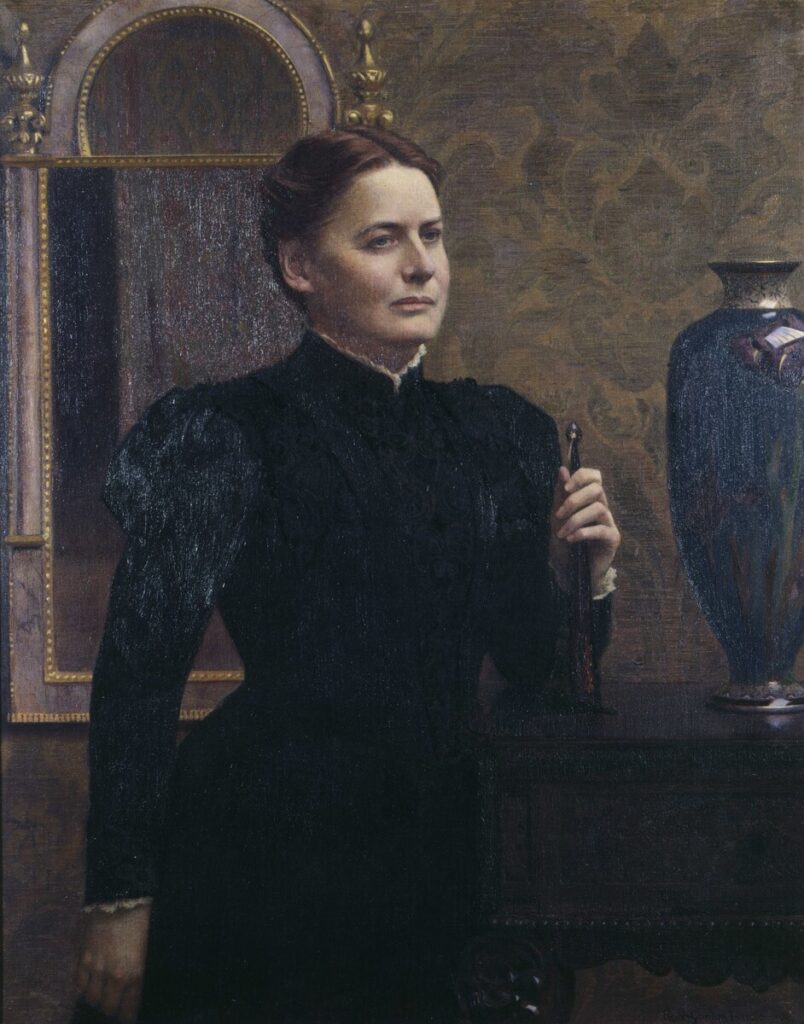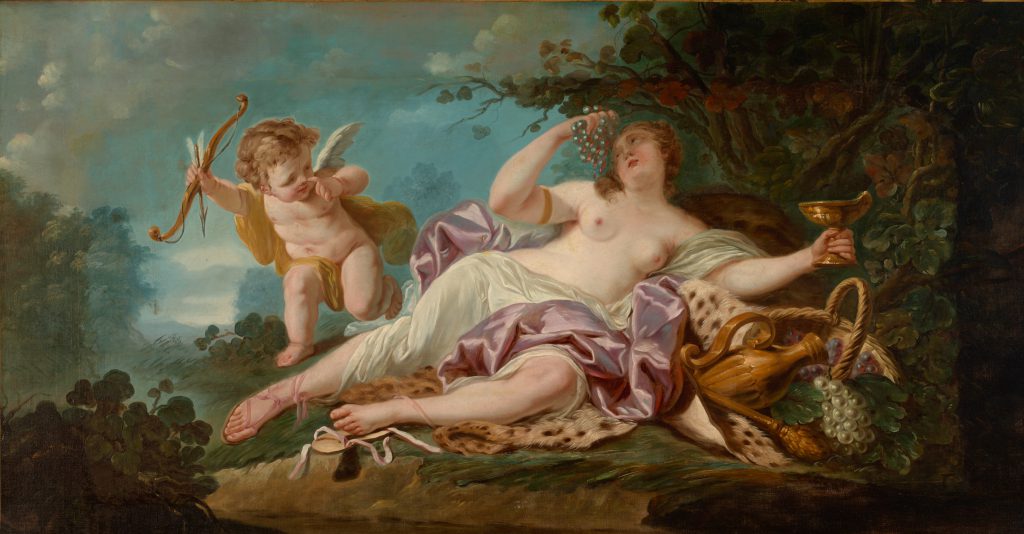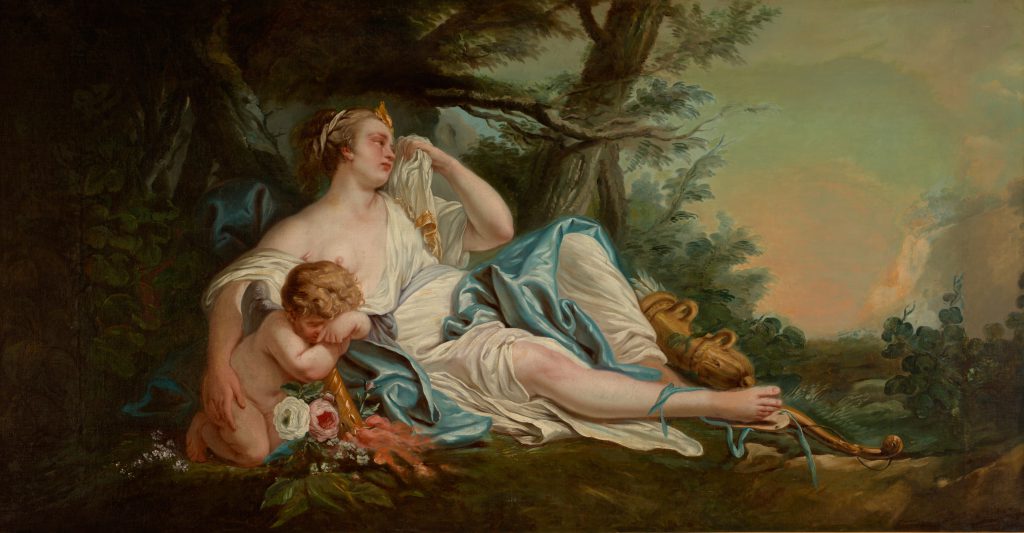Portrait of Caroline Sanders Truax (Mrs. Charles H. Truax) as Sappho
Gift of Carolyn Aldrich Frost (Mrs. Truax’s granddaughter) and Hunter S. Frost ’47
2000.10This portrait of Caroline Sanders Truax (1870–1940) was painted by the famed French painter Jean-Léon Gérôme. It depicts the sitter in the guise of the Greek lyric poet Sappho. Captured in the act of composing verse, she holds a kithara (a type of lyre) on her lap while several sheafs of paper with verse are on the rock to her right reading. In depicting the sitter in ancient guise, the portrait follows a long tradition of prominent Americans adopting the manners and dress of ancient Greeks and Romans. Mrs. Truax was a prominent member of New York society at the turn of the century. One of the first female lawyers in the state, in 1896 she married Charles H. Truax, a New York State Supreme Court Justice. She was an early graduate of the Woman’s Law Class of the New York University Law School and a life-long supporter of the arts.
The circumstances behind the painting are as fascinating as the portrait itself. The Truaxes visited Gérôme’s Paris studio shortly after their marriage, possibly on their honeymoon. Visiting the galleries of famous artists was a common activity for nineteenth-century American travelers in Europe. By this time, Gérôme had established himself as the preeminent academic painter of the period and was recognized for his orientalizing and classicizing scenes. Portraits by Gérôme were highly sought after.
Mrs. Truax, fluent in French, charmed the artist, inspiring him to paint her portrait and present it to her as a gift. A poet herself, Mrs. Truax penned several lyrics to be accompanied by classical music. The portrait made a splash in New York society when it arrived in America and appeared in several exhibitions. Descriptions of the painting and the remarkable story were reprinted in a number of newspapers of the period. In 1898, a friend of Mrs. Truax corresponded with the artist congratulating him on the portrait and received a reply expressing Gérôme’s delight that his painting should have pleased friends he did not yet know.
Sappho, a poet of Archaic Greece from the island of Lesbos, is a bold choice for a nineteenth-century portrait. Her lyric poetry was accompanied by music and was very popular in antiquity. Though she achieved legendary status, little survives of her poetry and much of what is known about her life is subject to debate. By the nineteenth century, the nature of her poetry, and particularly its celebration of womanhood and homoeroticism, made her a controversial figure. She has been widely adopted as a symbol of lesbian sexuality (the term sapphic derives from her name, and lesbian refers to her birthplace of Lesbos), and as a feminist icon. An especially mysterious note is struck by a figure falling from the cliff behind the sitter, a detail that alludes to one legend that suggests Sappho committed suicide in this way, a victim of unrequited love for a ferryman named Phaon. While the legend is almost certainly not true, it has captured the imagination of ancient and modern artists, including Gérôme.

